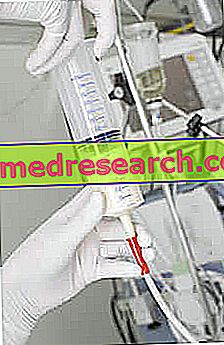Agnosia: introduction
Described for the first time by Lissaeur around the end of the nineteenth century, agnosia refers to the inability or difficulty of recognizing objects, people, shapes or stimuli, through one or more sensory channels.

Agnosia represents a very complex cognitive dysfunction, sustained by an immediate or progressive damage of some brain reasons related to the sensitivity and perception of external stimuli.
Diagnosis
Considering the brain disorder, it is advisable to make a differential diagnosis with pathologies apparently similar to agnosia, such as, for example, the abnormality: in the latter condition, the patient is able to recognize the object, but not to remember its name. At first glance, these two pathologies could be confused or misinterpreted: in this regard, the differential diagnosis helps to distinguish them.
The diagnosis of agnosia, often difficult to interpret, must be carried out through some targeted tests, which allow not only to identify the disorder, but also to define its severity.
The diagnosis is performed in order to recall a visual and / or verbal stimulus to the patient, subsequently evaluating the possible correspondence between the two stimuli. In other patients, the diagnosis only arises on visual evidence.
The various diagnostic tests include:
- Bottom-up (or test from the periphery to the center): decision-object- type test, where the agnostic patient is asked a series of questions regarding images. He must establish whether the object depicted in the image belongs to reality or is an imaginary object.
- Riddoch and Humphreys hippograph test: the subject is questioned about the possible existence or not of the figures represented in the drawings.
- Test of the figures with missing parts: some incomplete images are presented to the agnostic and he has to choose which of the proposed alternatives is more suitable to complete the first image.
- Verbal tests (top down, or from the center to the periphery): for example, the patient is called to perform a drawing, without having a sample to copy (production of visual images). The verbal description test also describes the form of a given object or image.
- Evocation test of the gesture through which an object is used: the specialist mimics an object, and the patient must choose which image is the most suitable to represent the object
- Colorage test of objects: the agnostic, placed in front of figures with no colored background, must color the white spaces with the most suitable color. An agnostic patient is not able to attribute semantic characters to the objects in question. (eg leaf → green)
Rehabilitation
Fortunately, agnosia is not a very frequent phenomenon; however, when presented, rehabilitative treatment can be particularly complex and difficult, even more so when the patient is suffering from anosognosia and has difficulty in recognizing himself. In such situations, some precautions are recommended, such as: remembering the patient where he is at that given moment, paying attention to the surrounding environment; remind the agnostic for what purpose a given object or instrument is used; pay particular attention to some parts of the body not recognized by the patient (through a mirror, for example); again, subject the patient to a series of practical rehabilitative exercises, useful for the recognition of the object under examination [taken from The rehabilitation of the hemiplegic: multimedia manual of evaluation and recovery of motor functions, By Giuliano Dolce, Ruggero Prati, Lucia F. Lucca]
Agnosias as a disease in their own right are rather rare, since they are often characterized by more complex and articulated brain deficits. Unfortunately, the complete recovery of the agnostic patient is rather unlikely: nevertheless, the symptoms can be relieved through targeted rehabilitation.



